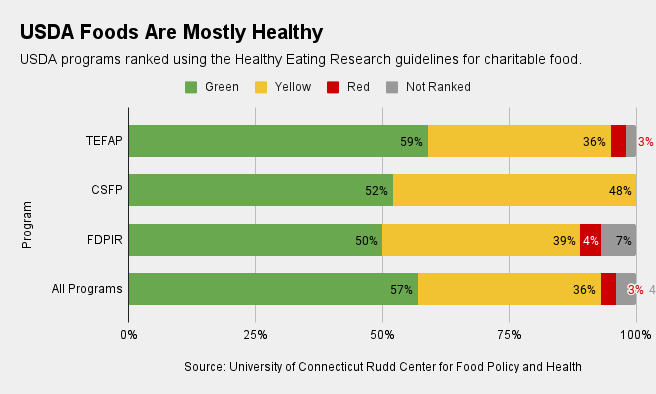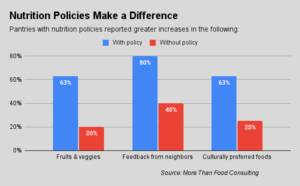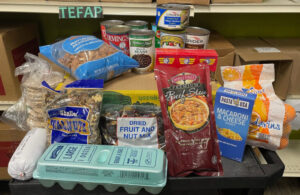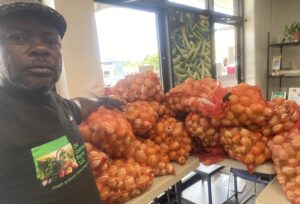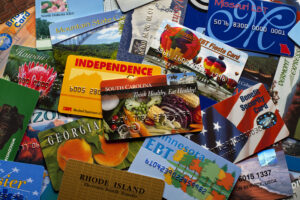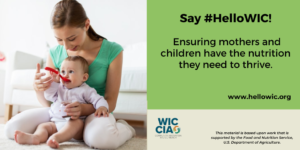When it comes to nutritional quality, a recent study has given the green light to the majority of foods in three USDA food programs at the heart of the charitable food system.
The study assessed food items offered by the TEFAP commodity food program for food banks, the FDPIR program for Indian reservations, and the CSFP program for seniors. Of 152 foods evaluated, the study ranked 57% as green (choose often), reflecting the reality that many of them are fresh and frozen fruits and vegetables, whole grains and fresh eggs. In addition, 36% of the food were ranked as yellow (choose sometimes), and 3% (a total of five products) as red (choose rarely).
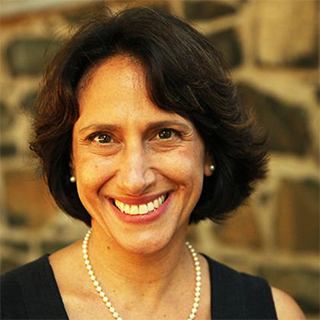
“We were very impressed by the finding that only a small number of the USDA food options were ranked red,” says Dr. Marlene Schwartz, an author on the study and Director of the University of Connecticut’s Rudd Center for Food Policy and Health.
The study evaluated the foods using the Healthy Eating Research (HER) Guidelines for the Charitable Food System, which uses the standard green/yellow/red stoplight colors to categorize foods based on factors such as saturated fats, sodium, and added sugars per serving. Condiments and staples such as vinegars, oils, and butter, which comprise 4% of the foods, were not ranked.
The study also assigned each of the programs a value from 0 to 100 based on their overall percentage of green, yellow, and red foods. TEFAP scored the highest at 81.4; followed by CSFP at 76.7, and FDPIR at 74.4.
“These findings can help food banks make informed ordering decisions within the USDA programs and compare the quality of USDA foods with other sources,” said Dr. Maria Gombi-Vaca, Lead Researcher.
The study identified ways for the USDA to move foods that rank yellow or red into healthier categories. For example, added sugar placed dried cranberries in the red, but specifying unsweetened cranberries would improve their ranking to yellow. Similarly, about one-half of the grain products were ranked yellow because they did not list whole grain as the first ingredient, providing an opportunity to add this requirement.
Acknowledging food banks’ interest in implementing the HER system, the Rudd Center has posted its rankings online to save some legwork. “We hope [food banks] can use our ratings instead of having to calculate the rank for each of these foods themselves,” Schwartz said.
The study comes as USDA is making efforts to help the charitable food system meet community dietary needs beyond nutrition. For example, TEFAP now indicates which foods either carry kosher and/or halal certifications or may be acceptable without a certification. Since November, USDA has also hosted web pages containing resources on how to meet the dietary needs of the kosher– and halal-observant communities.
In a recent USDA webinar, speakers emphasized the importance of food banks and pantries establishing relationships with the faith-based members of their community to understand the need for kosher and halal foods and to ensure that observant community members know there is an available resource. Speakers also emphasized the need to train staff and volunteers to ensure proper sourcing, handling and distribution.
The focus on communication and training fed into the larger topic of building trust with the faith-based community. When it comes to products that may be acceptable without a certification, for example, it’s essential to know which foods the community will accept. “This is where we definitely have to have that cohesive relationship with our local experts in the kosher and halal world,” said Nick Barber, Food Distribution Director with the New York State Office of General Services.
Ammar Ahmed, Public Relations and Government Affairs Coordinator with ICNA Relief USA, emphasized that meeting faith-based needs can be the difference between a food-secure and a food-insecure family. “Many Muslims will forgo nutrition security, will forgo meals, if the foods that are available are not halal,” he said. – Amanda Jaffe, with reporting by Carson Hardee of the Rudd Center for Policy and Health.
Amanda Jaffe is a writer and former attorney with a deep interest in organizations and mechanisms that address food insecurity. In addition to Food Bank News, her essays and articles have been published in a number of print and online magazines and journals. Her writing may be found at www.amandajaffewrites.com.
Like what you’re reading?
Support Food Bank News
